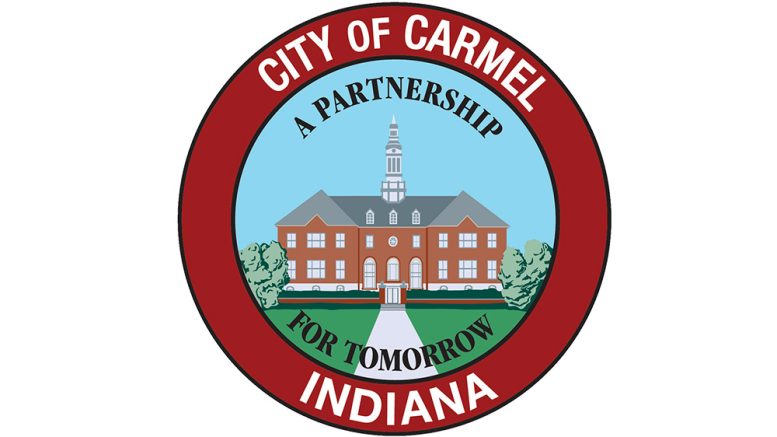Submitted by City of Carmel
The City of Carmel announced Friday that Carmel’s nonprofit arts and culture industry generated $42.7 million in economic activity in 2022, according to the newly released Arts & Economic Prosperity 6 (AEP6), an economic and social impact study conducted by Americans for the Arts.
That economic activity – $17 million in spending by nonprofit arts and culture organizations and $25.7 million in event-related spending by their audiences – supported 981 jobs and generated $10 million in local, state, and federal government revenue. Spending by arts and culture audiences generates valuable commerce to local merchants, a value-add that few other industries can compete with.
Click here to view the Carmel numbers.
Building on its 30-year legacy as the largest and most inclusive study of its kind, AEP6 uses a rigorous methodology to document the economic and social contributions of the nation’s nonprofit arts and culture industry. The study demonstrates locally as well as nationally, arts and culture are a critical economic driver of vibrant communities.

Brainard
“The results from this survey show the importance of investing in our local arts and how that positively impacts our hotels, restaurants and shops,” Mayor Jim Brainard said. “We have built a vibrant community that is filled with art and cultural events throughout the year. The arts inspire creativity, instill a sense of pride, and bring added economic benefits as well.”
Nationally, the Arts & Economic Prosperity 6 (AEP6) study reveals that America’s nonprofit arts and culture sector is a $151.7 billion industry – one that supports 2.6 million jobs and generates $29.1 billion in government revenue.
“Arts and culture organizations have a powerful ability to attract and hold dollars in the community longer,” said Nolen V. Bivens, president and CEO of Americans for the Arts. “They employ people locally, purchase goods and services from nearby businesses, and produce the authentic cultural experiences that are magnets for visitors, tourists, and new residents. When we invest in nonprofit arts and culture, we strengthen our economy and build more livable communities.”
AEP6 represents a reset from its previous versions, establishing a new benchmark in the AEP study series.
- Social Impact: For the first time, AEP6 expands beyond the economic and financial data to include social impact measurements of arts and culture’s effect on the well-being of communities and residents.
- Equity and Inclusion: AEP6 broke new ground by prioritizing equity, community engagement, and inclusivity. With the goal of reducing systemic bias, Americans for the Arts transformed its approach and expanded the inclusion and participation of organizations serving or representing BIPOC (Black, Indigenous, People of Color) and ALAANA (African, Latino, Asian, Arab, Native American) identifying communities.
“Live music and the arts represent the soul of our city, fueling Carmel’s economic and quality of life engine,” said Anne Marie Chastain, Executive Director of the Carmel Symphony Orchestra. “A vibrant live performance scene is not a luxury for us: it is an essential catalyst for our economic development. Live performances attract visitors to Carmel and boosts local businesses, nurturing the health of our economic community.”
Nationally, the extensive research reveals proportional economic and community impacts among attendees at BIPOC and ALAANA organizations to the overall national average. These findings should initiate new, and escalate existing, critical funding conversations about BIPOC and ALAANA organizations receiving fair and proportional financial support.
Key figures from Carmel’s AEP6 study include:
- Carmel’s nonprofit arts and culture industry generates $25.7 million in event-related spending by its audiences.
- The typical attendee spends $31.77 per person per event, not including the cost of admission.
- 48.6 percent of arts and culture attendees were from outside the county in which the activity took place. They spent an average of $36.43. All vital income for local merchants.
- 89.3 percent of nonlocal attendees reported that the primary purpose of their visit was specifically to attend the performance, event, exhibit, venue, or facility where they were surveyed.
- 84.5 percent of respondents agreed that the activity or venue they were attending was “a source of neighborhood pride for the community.”
- 77.5 percent said they would “feel a sense of loss if that activity or venue was no longer available.”
AEP6 demonstrates the significant economic and social benefits that arts and culture brings to their communities, states, and the nation. To amplify the study results and raise awareness of these widespread benefits with public and private-sector leaders, 17 national organizations partnered with Americans for the Arts on AEP6:
- Actors’ Equity Association
- African Diaspora Consortium
- Arts & Planning Division (American Planning Association)
- Black Legislative Leaders Network
- Department for Professional Employees
- AFL-CIO (American Federation of Labor and Congress of Industrial Organizations)
- Destinations International
- International City/County Management Association
- Independent Sector
- National Association of Counties
- National Conference of State Legislatures
- National Alliance of Community Economic Development Associations
- National Independent Venue Association
- National Organization of Black Elected Legislative Women
- Race Forward
- Recording Industry Association of America
- The Conference Board
By measuring arts and culture’s wide-ranging impact, public and private sector leaders can work together to secure funding and arts-friendly policies that shape more vibrant and equitable communities.
The full report, a map of the 373 study regions, and a two-page economic impact summary for each can be found at AEP6.AmericansForTheArts.org.

